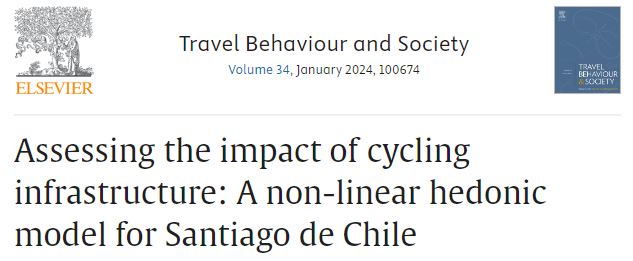Rodrigo Vega, Margarita Greene, Juan de Dios Ortúzar
Abstract
Cycling has experienced a significant increase in several parts of the world, partly due to a general interest towards sustainable mobility. Chile is not an exception, and cycling has grown steadily in recent decades. However, we do not have an appropriate social evaluation method for cycling infrastructure projects, as they may imply a higher travel time than trips by other modes, and there is no consideration of the health and environmental benefits that cycling implies. To advance on this issue, we built a georeferenced databank about diverse urban amenities, including cycleways, Metro lines, urban highways, schools and parks, in the vicinity of a set of selected properties. With this data, we formulated and estimated a non-linear hedonic model, incorporating a functional form that allowed us to represent the effect of amenities in a continuous fashion, reaching a maximum at a certain distance from the property and not adjacent to it. The model was also validated using an independent sample. Our results show a substantial and statistically significant effect of cycleways in property prices (and also of other amenities included to control for their effects). As such, we suggest that their consideration could be incorporated in the social evaluation tool-kit and even be used by real estate developers as an ancillary tool for deciding new project locations.
